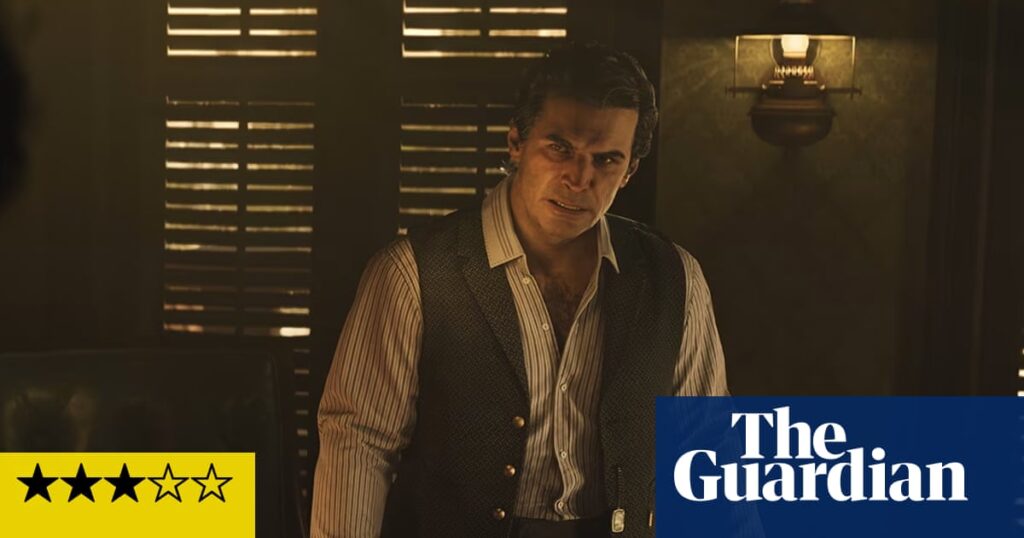Once upon a time, the industry was drowning in games like this. Single-player, story-led action experiences with a weekend’s worth of choreographed set pieces and an open world glazed with a fine mist of collectibles … But here in 2025, the age of the Battle Pass and live service forever games, Hangar 13’s solo adventure about Sicilian crime families feels almost as dated as its 1900s setting.
In fact, The Old Country has few new ideas to contribute to the cover shooter genre, nor to the Mafia series itself. Hangar 13 already produced a remake in 2020 of the original Mafia: The City of Lost Heaven, but in this game it often feels like the studio’s remaking it yet again in a different setting. Both the storyline and structure of its individual missions seem to be at the very least giving a reverential nod of the fedora to that 2002 title.
Case in point: the “win a race to impress your Don” mission trope. This chapter was infamous in the original Mafia because the 1930s race cars were extremely hard to handle and the race was all but unwinnable, but it was also a sophisticated multi-stage mission structure full of sabotage, theft and unexpected double-crossings. Mafia: The Old Country simply has you riding out to a town where a race is due to take place, then tells you the Don needs a replacement rider and drops you into the saddle for an uneventful canter around a course that features no real challenge. Ten years ago, such a by-the-numbers experience would have been criticised, but right now the scarcity of games like this means you’re inclined to look past the basic mission design and enjoy its strongest assets instead: its story, and its sense of time and place.
It’s 1904 and you are Enzo Favara, an unfortunate young man with no family to speak of who finds himself working down in the sulphur mines with his fellow carusi in their yellow-stained rags and shaven heads. After working conditions at the mine tip past horrific and into fatal, Enzo stands up to his sadistic employers and makes a powerful enemy in Don Ruggero Spadaro, the local “businessman” who owns the mine. Not to worry, though – after fleeing, he’s taken in by Don Torrisi, a rival of Spadaro’s, who appreciates the young man’s bravery and work ethic. You can see where this is going.
What follows is your typical ascendancy through the ranks of a crime family, expressed through the medium of knife fights and old timey shootouts, in the era when reloading a pistol takes three to five days. Local businesses refuse to pay up. Workers go on strike. Bandits and rival families threaten your reputation. You journey to a locale that’s conveniently littered with waist-high cover, hunker down and set to them.
In fairness to Enzo and his associates, missions aren’t always about all-out violence. At times you’re sneaking around, distracting guards by throwing coins and bottles to lure them away from your path. There’s a lot of riding horses and driving cars and plenty of expository chat to deepen the context of your actions either side of the fracas. These mechanics outside combat are not especially exciting, but this is a mafia game. It’s not trying to be a deep, systems-laden experience – it just wants to tell you a gangster story.
And by the skin of its teeth, it succeeds in that endeavour. But it does so via premise rather than plot. The beats are predictable. The memorable moments aren’t clever lines of dialogue or dramatic denouements, but vivid historical details. Pheasants strung up in pantries, baskets of citrus fruit piled high in fields. Workers stamping on grapes in the Torrisi vineyard. Historically accurate recipes for spezzatino di maiale on kitchen counters. The Sicilian dialect peppered throughout each conversation (I heartily recommend going all-in and changing to Sicilian audio localisation with English subtitles). Here is a game that has done its research, and brought to life a geographical and historical setting previously unvisited by games. And done it so well that it proves to be Mafia: The Old Country’s saving grace.
after newsletter promotion
It’s hard to make the case that its knife fights and shootouts are anything more than functional, and its missions feel slightly too straightforward to befit a franchise once known for its sublime changes of pace. But even with those caveats in mind, it’s still absolutely worth playing for the richness of its setting, and the infectious enthusiasm it has for its grim subject matter.

